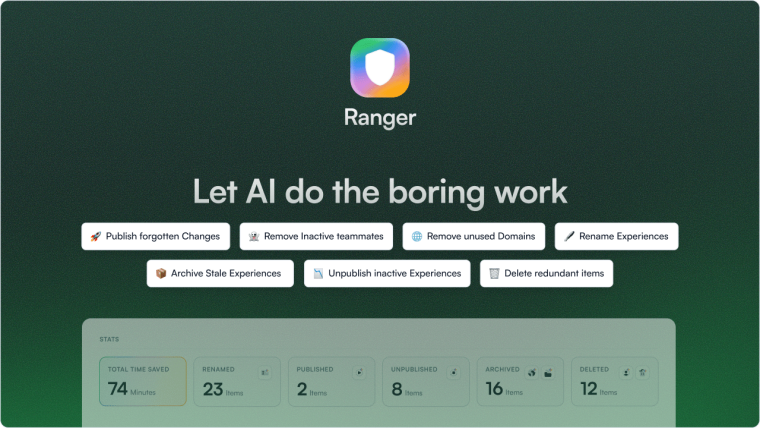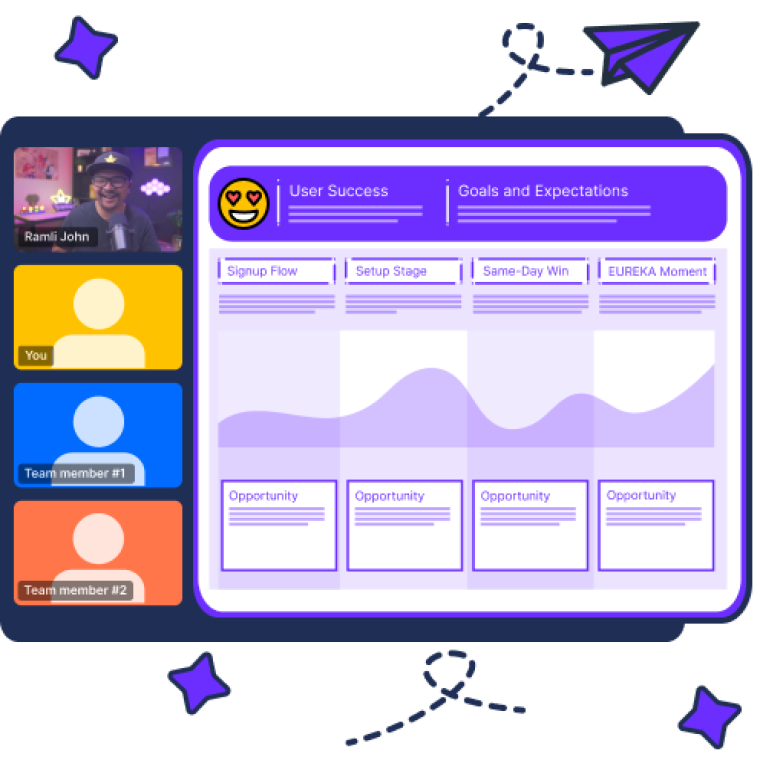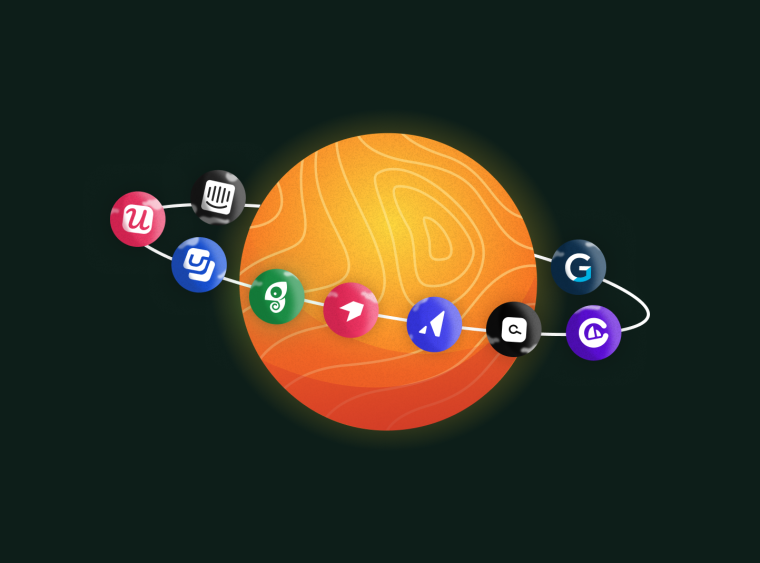Whether you have just started developing your product or you’re well beyond the initiation stage, your user personas will be crucial in creating relevant product adoption strategies that champion and centralize your users.
User personas tell you not only who your users are, but also how you can better serve their needs, overcome their challenges, fix their pain points, and understand their motivations.
In this article, we’ll give you a rundown of the best practices for developing your own user personas, equip you with tools to help you in the process (like a great user persona template), and even provide you with three user persona examples to guide you in building your own.
User personas are fictional characters based on user data and characteristics that paint a complete picture of who your customers are.
A user persona is not the same thing as an ICP (Ideal Customer Profile) or a buyer persona.
Creating your personas involves looking at both qualitative and quantitative data about your users; user research is the most important part of the process!
Developing user personas is tied to user segmentation; your personas can help you identify user groups and your target audience more effectively.
There are several tools that can help you in the process of creating your personas: from persona generators to digital adoption tools that let you engage with them.
What is a user persona?
Let’s do a little linguistic analysis.
The word persona comes from Latin and was originally used to define a “mask, character played by an actor.” You might be wondering if the English word person originated from the Latin persona, and you are correct, it did! So is a persona a character, like in the original meaning, or an individual, like a person?
Well, it’s a little bit of both. A user persona is a character envisioned to represent the individuals (users) who will be consuming your product. User personas are essential for an effective product development and product marketing strategy, as they help define your product positioning and improve your reach to your target audience.
User persona vs. ICP: What is the difference?
If you’re thinking about user personas, you may have also come across the term ICP, or Ideal Customer Profile. To better distinguish between these two terms, let’s put it in the context of product-led SaaS companies.
You are a B2B SaaS company. Your customers (or buyers) are the people making the executive decision to purchase your product, while your users are the people who will be actively engaging with it (an ICP somewhat resembles a buyer persona). These may overlap, but the kind of data you will be looking for to define them will differ.

3 user persona examples to help you create your own
Building your own user persona is a data-backed storytelling exercise. While your data will let you look at your target audience and user base to provide you with the characteristics of your personas, it’s up to you to put these into context, envisioning how they can translate into potential goals, challenges, motivations, pain points, behaviors, etc.
Take a look at these user persona examples and download our user persona template to build your own! 👀
User Persona Example #1: Rebecca Smith, 32, Product Marketing Manager
Rebecca is a 32-year-old Product Marketing Manager at a SaaS start-up who recently relocated from New York, NY to Evanston, Illinois for her new job. She has been in the product industry for four years now, where she started off as an associate at an enterprise-level company.
Motivations: Rebecca is the first PMM hire in a startup that is trying to grow its customer base and MCUs. She believes in her product’s potential, wants to show her team that hiring her was worth it, and is dedicated to finding the best solution to their current problems.
Goals: Rebecca is expected to relieve the weight on marketing, customer success, and engineering teams who have been overwhelmed by a large backlog of open tickets and negative user feedback as a consequence.
Pain Points: Rebecca knows from experience and from her team’s past reports that traditional customer surveying methods have been ineffective. They have tried running e-mail surveys targeted at unhappy customers, but the response rates have been low.
Jobs to be done: Rebecca is quite tech-savvy and enjoys learning by doing. Her first priority is to find a solution for gathering user feedback, so once she finds the best fit for her company, she’ll make sure the whole team can take action from her insights.
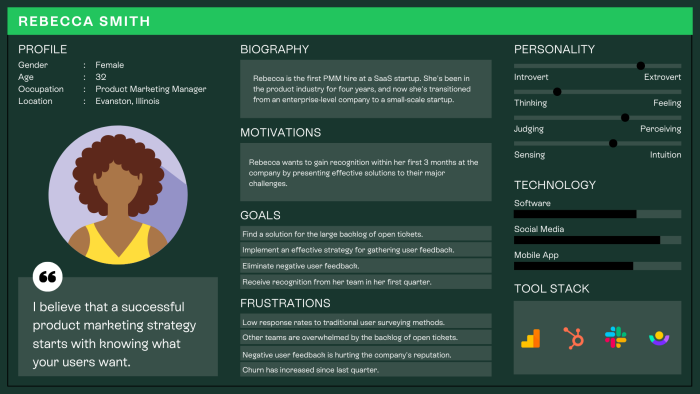
User Persona Example #2: Mario Gomes, 39, Customer Success Manager
Mario is a 39-year-old experienced CS Manager who has been working at an enterprise-level SaaS company for five years, for which three have been under a management role. He lives in Berkeley, California, and has been working remotely for the past two years.
Motivations: Besides aspiring for a promotion, Mario wants to be an agent of growth at the company and assert their competitive advantage in the product-led environment.
Goals: Mario aspires to become Head of Customer Success at this company within the next year. He has already discussed this with leadership and together they have set some performance goals to be reached by the end of the quarter, like upgrading at least 5% of their customers to more advanced plans.
Pain Points: Mario has been dealing with a lot of reluctant customers who have been trying to cut or maintain costs to contain the economic impact of the Covid-19 pandemic.
Jobs to be done: Mario will meet with the sales and marketing teams to build a strategy to target the most qualified customers with relevant in-product messaging that highlights the benefits of an upgrade.

User Persona Example #3: Kevin Yu, 26, UX Designer
Kevin is a 26-year-old UX Designer who recently switched specializations from graphic to UX design. He participated in a 9-month UX/UI Design Bootcamp at Springboard and scored a junior role at a mid-market level company. He lives in Brooklyn, NY, where he shares an apartment with a software engineer.
Motivations: Kevin wants to build a strong portfolio of UX design so that he can grow quickly within the company and within the UX community. He hopes to, one day, found his own UX agency alongside his roommate.
Goals: Kevin is eager to show initiative and wants to streamline the process of deploying new user experiences without overwhelming other teams.
Pain Points: His immediate challenge at a large company is getting his designs implemented on the site/product with no dependency on the engineering team and without having to wait on release cycles.
Jobs to be done: Kevin researches within his UX community for frameworks and tools that can be applied to the company’s product and builds a proposal to implement a digital adoption software that will allow him to deploy in-app experiences on his own.

Download the user persona template here ⬅️
How to start building your own user personas
Creating your user personas should happen in the early stages of your product development and can be revised as you gather more data about your users. Your personas will guide most (if not all) of your teams as you scale and grow your product.
Who should be developing your user personas?
Unlike regular personas, which are primarily devised by marketing teams in companies outside the SaaS or tech environment to guide marketing campaigns and brand strategies, user personas are more effective when developed in a combined effort between product managers, marketers, and UX designers.
The PM and product teams should own the process and be accountable for maintaining personas up to date and up to data, but all teams will have valuable insights that can contribute to the creation of detailed personas.
Here are a few steps that can help you get started.
Step 1: Start with the research
User research is the most important step. You must understand your users, their needs, their pain points, and more to be able to create effective personas. You can do that by running both qualitative and quantitative research.
👥 Qualitative data will tell you information like where your users work, what is their job title or role, where they are located, what languages they speak, and other descriptive data.
🔢 Quantitative data will tell you how many users your product reaches, how often they use your product, how much time and money they spend on it, and other numerical/measurable data.
You can collect this information using data-sourcing tools or by leveraging a data marketplace, as well as by engaging directly with your users through feedback loops, which can be integrated directly into your app with Digital Adoption Platforms like Chameleon.
Get user feedback with Chameleon
Run in-product surveys to collect contextual user feedback throughout the development process – from ideas to validation to deployment.
Step 2: Segment your users
User segmentation is fundamental for an effective product-led strategy. When building your personas, user segments will help you group users based on shared traits and needs to target each cohort more effectively.
User segments can be divided by job title, company size, product usage, pain points, motivations, jobs to be done, lifecycle stage, etc.
Step 3: Create user personas for each segment
After you split your user base into segments, create a persona for each one. One of the best practices here is not to go into too many irrelevant details, e.g. don’t add age, country, marital status, habits, etc. if that’s not relevant for your product.
HubSpot has a Persona Generator tool to help you create your personas based on a set of characteristics.
Step 4: Share with your whole organization
After you’ve generated your personas, they should be accessible to everyone in your company. Each team will have a different use for it, but all will rely on defined personas to develop strategies that are appropriate and effective, and that place your user at the center of decision-making.
👥 Sales teams will be able to identify SQLs (Sales Qualified Leads) more effectively.
📈 Marketing teams will be able to target the right users and prospects with their marketing strategy.
🖱️ Design/UX teams will tailor designs and user experiences to your personas’ needs and preferences.
💻 Product teams will build the product around your persona’s goals, motivations, pain points, and needs.
👍 Customer Success teams will be better equipped to support your customer base.
Step 5: Use personas to map out user journeys
At this point, there are a few questions you can ask to determine each persona’s user journey. Each persona user journey map will be attached to their profile and specifically empathize with their character type, job to be done, pain points, or fears they may be carrying from their previous solution.
A great way to do this is by using Chameleon’s in-app Microsurveys to help discover customer needs, feelings, and motivations are:
How easy was this process for you?
On a scale of 1-10, how likely are you to recommend us to a friend or colleague? (NPS)
Did you find what you were looking for?
What’s stopping you from doing what you expected to do here?
How happy are you with your experience?
You may find that one of your personas prefers self-serve onboarding experiences, where they can figure things out themselves with little but straight-to-the-point guidance within the product. Or you may find that when you launch a new feature, each one of your personas needs a different approach to inspire feature adoption.
Based on the responses, you can create an empathy user journey map like in this Miro example, where Miro has collected customer thoughts alongside touchpoints and actions and conveyed feelings with an emoji. It’s a simple but effective way of remaining empathetic with your user personas as you build your product.

Conclusion
Are you ready to start building your own personas? Keep this guide in hand to help you with the process, but remember:
Use data around who your users are and what they need to guide your process;
Gather input from other team members to make sure that you’re including information that is relevant to them;
Revisit and revise your user personas as needed, if your goals change, theirs also might;
Do not leave them in the past! User personas are relevant at all stages of the product lifecycle.
Personalization (which even has persona in it) is key for user retention, engagement, and product adoption. Besides the crucial role, your personas will have in guiding your product marketing efforts and tailoring your in-product experiences to your different customer profiles, the persona design process itself is a valuable part of your user research.
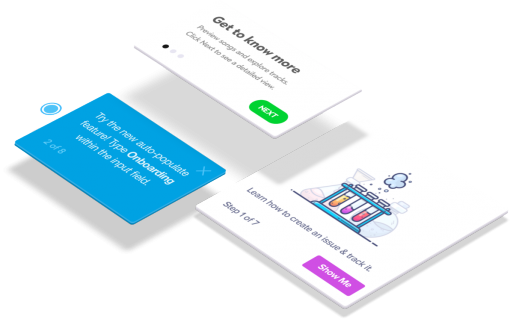
Show users the right content, at the right time
Use Chameleon's product tours, slide-outs, and modals to show users engaging content throughout their journey


